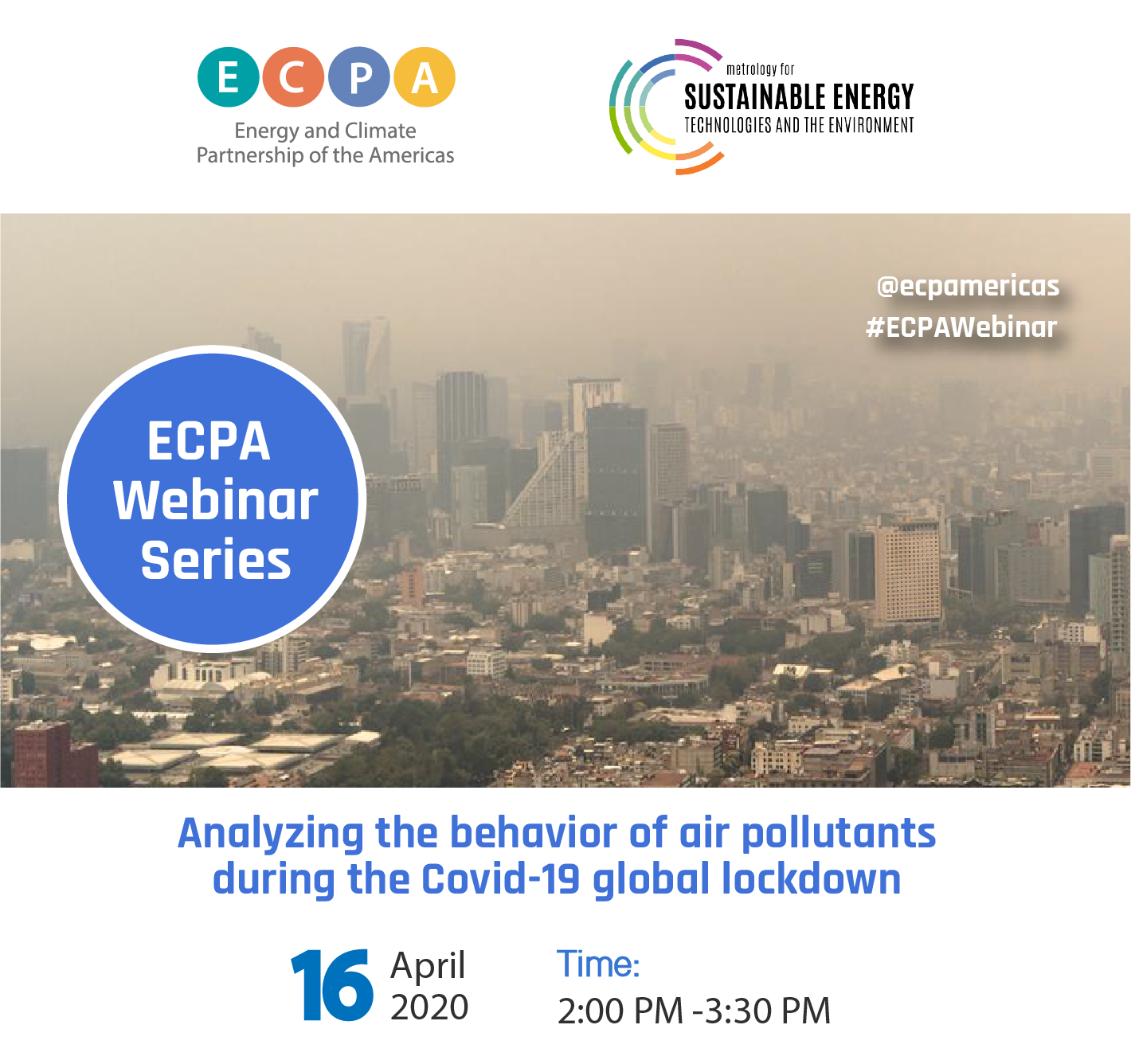- English
- Español
Sustainable Energy
Metrology for Sustainable Energy Technologies and the Environment (M4SET)
Analyzing the behavior of air pollutants during the Covid-19 global lockdown

- This activity took place virtually on April 16, 2020, and counted
with around 150 participants, where air quality monitoring stations in the cities of Medellín, Santiago de Chile, Buenos Aires and Mexico City, shared the changes in air quality in their cities during the Covid-19
lockdown. In follow-up to this seminar, a
follow-up meeting was organized on April 22 to resolve pending questions from the monitoring stations,
and where the cities of Quito and Sao Paulo also had the opportunity to present the trend of air quality in their cities during the
lockdown.
With millions of people on a lockdown as a result of the coronavirus outbreak, cities around the world began to see changes in the behavior of air pollutants. A dramatic drop in traffic and reduced industrial and commercial activity led to a temporary drop in air pollution levels almost everywhere in the world. As the response to Covid-19 around the world altered behaviors that generate toxic pollutants and emissions, the current situation provides a momentary glimpse of what happens to the air we breathe when emissions are drastically reduced and sudden.
Data collected by air quality monitoring stations in Latin American cities showed a dramatic improvement in air quality since quarantine over the same period a year ago. Air pollution has been decreasing in most of the developed world as authorities have been imposing curfews and restricting movement in the wake of the Covid-19 outbreak. The measured drop in nitrogen oxides or NOx is not surprising since economic activity and transport are currently minimal.
However, this was not the overview for all cities; Climate events influence air pollution, so cities that experienced fires could still have high levels of particulate concentration such as PM 2.5, and similarly, other cities could experience increased levels of ozone and ultra-fine particulate matter due to chemical interactions between volatile organic compounds (VOCs) and nitrogen oxides.
This virtual seminar opened a space to share the latest data on air pollution from various air quality monitoring stations in Latin America, and was an opportunity to discuss the emissions data and methods used by the monitoring stations in the region to analyze the behavior of air pollutants during the lockdown period.
The Panel:

Welcome remarks
Juan Cruz Monticelli, Section Chief, Organization of American States (OAS).
General overview on air pollutants
Dr. Jorge Koelliker, Coordinador Científico del Grupo de Metrología de Gases, CENAM, Mexico. See presentation here.
James Norris, Gas Sensing Metrology Group, U.S National Institute of Standards and Technology (NIST) requested the floor for an intervention and contributed to the overview on air pollutants. See presentation here.
What can be interpreted from the current levels of Air Pollution?
• Medellín, Colombia: Tiberio Benavidez, Universidad Nacional de Colombia, sede Medellín, Laboratorio Calaire. See presentation here.
• Santiago, Chile: Isabel Leiva Campos, Superintendencia del Medio Ambiente (SMA) . See presentation, here.
• Buenos Aires, Argentina: Maria Ines de Casas Agencia de Protección Ambiental, S.O Monitoreo Atmosférico. See presentation here.
• Ciudad de Mexico, Mexico: Olivia Rivera Hernandez, Sistema de Monitoreo Atmosférico de la Ciudad de Mexico (SEDEMA – SIMAT). See presentation here.
• Sao Paulo, Brasil: Maria Lucia Goncalves Guardani,Companhia Ambiental do Estado de Sao Paulo (CETESB). See presentation here.
• Quito, Ecuador: Maria Valeria Díaz Responsable Técnica y Administrativa de la Red de Metropolitana Ambiental de Quito, Laboratorio de la Secretaría de Ambiente. See presentation here.
The recording of the whole session will soon be available in this website.
Objective
Coordination


